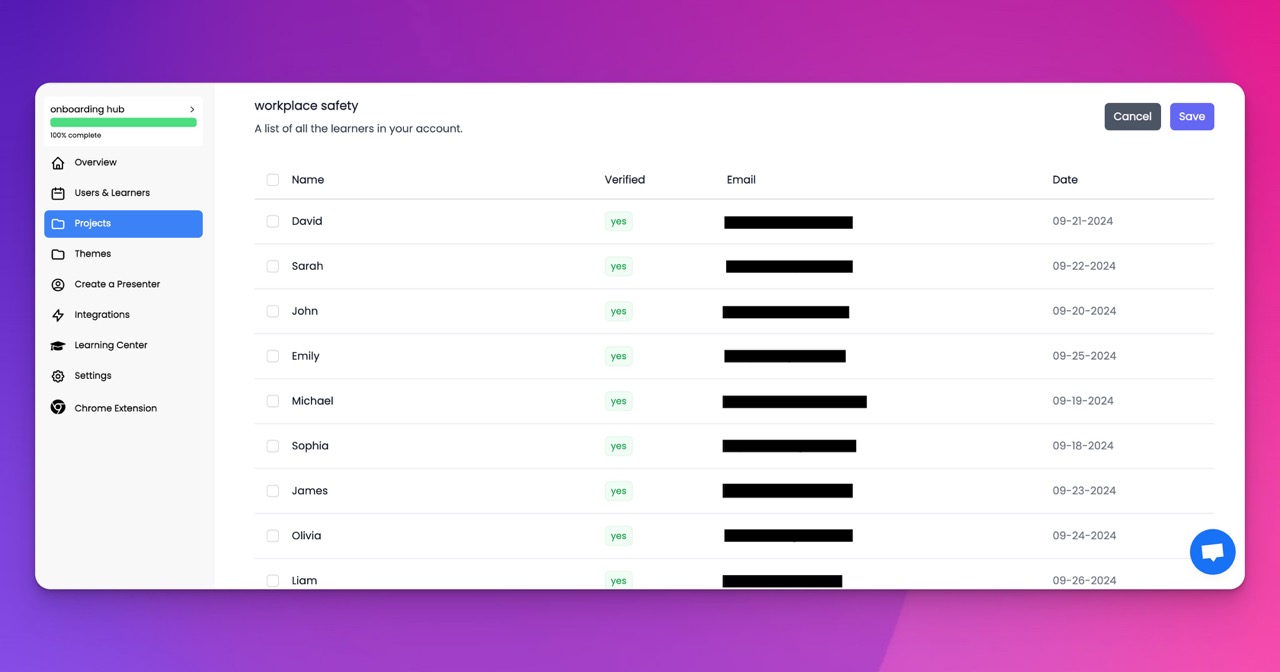🎉 Trainday now integrates with Zendesk and Hubspot 🎉 Trainday now integrates with Zendesk and Hubspot 🎉 Trainday now integrates with Zendesk and Hubspot
🎉 Trainday now integrates with Zendesk and Hubspot
🎉 Trainday now integrates with Zendesk and Hubspot
Contact
"Revolutionizing Compliance Training For Board Of Directors: Unveiling The Power Of AI Avatars"
Revolutionizing Compliance Training for Board of Directors: Unveiling the Power of AI Avatars
In today's fast paced business landscape, compliance training for board of directors plays a critical role in ensuring ethical business practices and regulatory adherence. However, traditional training methods often fall short in engaging directors and delivering the necessary knowledge effectively. Enter AI avatars, which are set to revolutionize compliance training and empower board members with an immersive and dynamic learning experience.
AI avatars leverage the power of artificial intelligence and natural language processing to create lifelike virtual characters that can interact with users in real time. These avatars can be programmed to possess specialized knowledge in various compliance areas, making them ideal virtual instructors for board members seeking to enhance their understanding of complex regulations.
One of the key advantages of using AI avatars in compliance training is their ability to provide personalized and interactive learning experiences. Unlike static online courses or traditional classroom sessions, avatars can adapt their teaching style and content to meet the specific needs of individual directors. By analyzing user responses and behavior, AI avatars can tailor the training content and pace to ensure optimal engagement and knowledge retention.
Furthermore, AI avatars create a safe and non judgmental environment for directors to ask questions and seek clarification. Board members may hesitate to admit their lack of understanding in a face to face setting, but with avatars, they can freely interact and raise concerns without fear of judgment. This fosters a more open and collaborative learning environment, encouraging directors to actively participate and gain a deeper understanding of compliance requirements.
The use of AI avatars also offers a level of flexibility and convenience that is highly beneficial for busy board members. Instead of scheduling training sessions that may conflict with their existing commitments, directors can access the training modules at their own pace and convenience. Whether it's during a lunch break or while traveling, the avatars are available 24/7, allowing directors to fit training into their hectic schedules.
Another noteworthy advantage of AI avatars is their ability to simulate real life scenarios, enabling directors to practice decision making in a risk free environment. Compliance training often involves navigating complex ethical dilemmas, and avatars can provide realistic simulations that challenge directors to make informed choices based on the applicable regulations. This practical application of knowledge helps board members develop critical thinking skills and enhances their ability to make well informed decisions in the real world.
In addition to their instructional capabilities, AI avatars can also provide continuous monitoring and assessment of directors' progress. By tracking their performance and analyzing their interactions, avatars can identify knowledge gaps and areas that require further focus. This allows board members to receive targeted feedback and recommendations for improvement, ensuring a more effective and efficient training experience.
While AI avatars are a groundbreaking addition to compliance training for board of directors, it's important to note that they are not meant to replace human expertise. Rather, they enhance the learning process by providing an innovative and immersive platform for knowledge acquisition and practice.
In conclusion, AI avatars have the potential to revolutionize compliance training for board of directors by offering personalized, interactive, and flexible learning experiences. From adapting to individual needs to creating realistic simulations, these virtual instructors empower directors to enhance their understanding of compliance requirements and make well informed decisions. As technology continues to advance, AI avatars are set to become an invaluable tool in the boardroom, driving ethical practices and regulatory adherence to new heights.
Accelerate Compliance.
Deliver OSHA-Ready Courses Instantly.
Empower your team with data-driven training solutions tailored to your industry's safety standards. Stay compliant, reduce risks, and boost productivity with AI-powered course creation.
